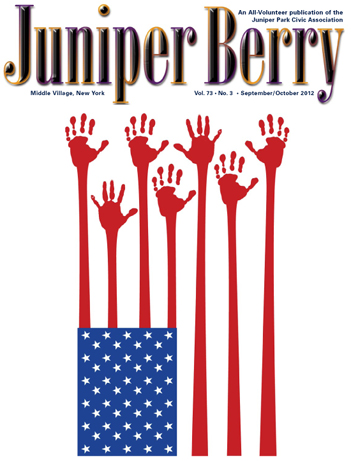To anyone interested in looking through a window at New York’s past they should go to the main branch of the Queens Library in Jamaica where they can read all the local papers of Queens on microfilm.
Recently, I was looking for some information in the Queens Ledger and became so engrossed that I browsed through two years of the weekly paper from 1956-57. Maybe because I was around at that time and knew some of the people and also remembered some of the events that occurred or because I learned things I never knew, I was completely fascinated and before I knew it I was there for a few hours.
There has been talk for years now that electronic media will be the sole source of people’s news information especially for the young generation and that the newspaper and print media are dead and outdated. I use a computer and see the news headlines every day but the stories are short and they always seem abbreviated. There is nothing to hold your attention. I’ve concluded that nothing is as complete as a newspaper where you can flip from world news to the comics in a second and then go to the sports section.
The information you see ends up to be much more than any computer. For instance, a newspaper gives you a look into the popular culture of the day and there are numerous articles about every subject including politics, crime, schools, churches, accidents, history, sports, comics, finance, marriage and birth announcements and death notices.
Some of the big issues of the day affecting New York City were in 1956-57 when Robert Wagner was our Mayor and laws were passed that made it illegal to discriminate against anyone based on race when that person is looking to buy, sell or rent a house or apartment. Also plans were made to force integration in the public schools by busing children to different neighborhoods. Many felt this was wrong and would cause a flight of white people from the city.
Another controversy was the adding of fluoride into the city’s water supply because there were many who felt it created a health risk.
There were editorials and articles calling for the city to investigate the Second Avenue Subway Project because a $500 million Bond had passed through the legislature in 1950 and no work on the project was ever started.
The Long Island Expressway was newly completed through Maspeth and was causing an increase in traffic problems. At the intersection of 74 Street and 57 Avenue a stop sign was erected. On Caldwell and 74 Street residents protested to have either a stop sign or a traffic light erected and because of the many accidents this site it was referred to as “Elmhurst Death Corner.” Two weeks later the city installed a Yield sign.
Many people felt cut off by the LIE and there were demands for pedestrian overpasses, which the city opposed, but after protests the city agreed to build them at 61 Street and 71 Street at a cost of $715,000.
Residents complained to the Air Pollution Board about soot and ash from the Betts Avenue sanitation incinerator because that facility was causing homes and laundry to get dirty.
In the 1950’s they started to build Elmhurst Hospital.
In 1956 PS73 became a Junior High School. Before that it was for grade 1-8. A dress code was established for girls, no makeup, no tight sweaters or see through blouses. For the boys it was no dungarees, tight pants or duck back haircuts. It was believed that this look was associated with gangs.
Ground breaking began for a new park on 69 Street and the LIE. The People’s Civic Association wanted it named after Frank Frontera, a businessman, banker and civic leader in Maspeth. They also called for a running track to be built in Juniper Valley Park.
There was opposition when the city closed PS72 and later on at that location Martin Luther High School was built. There was also opposition to the city’s plan to close PS 78 and the need for a new school, which later became PS 229.
The Midville Property Owners won a fight against a tractor-trailer parking lot on 69 Street and prevented a sweater factory from opening up in Middle Village.
In 1957 parking meters were installed on Grand Avenue from 72 Street to Flushing Avenue.
Homes in Queens were advertised for around $18,000 to $20,000 for a two family and $12,000 to $15,000 for a one family. Apartment rentals ran from $115 to 160 a month for 5 to 8 heated rooms in Queens.
The prices of appliances in local stores were $200 for an air conditioner, $150 for a refrigerator, $137 for a washer, $137 for a T.V. and $27 for a Hoover vacuum.
Reverend Weston of the Maspeth Methodist Church announced the annual Strawberry Festival and admission was 80 cents for adults and 60 cents for children.
And yes, there was crime in the good old days. The Maspeth Movie and Leo’s Candy Store were both broken into and vandalized and Grand Department Store was held up for $500 at gunpoint. There were other stories that I read involving drunk driving, fights, shootings and corruption.
The times have changed but I still start my day with the Daily News and like to read the various local papers that come out each week. The articles are written by real people each day, do we know or really care who writes articles on the computer?
A computer gives you the story but if you want to get the whole picture read the newspaper.




